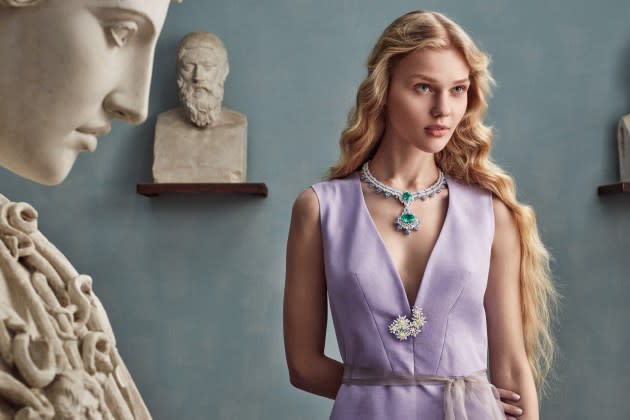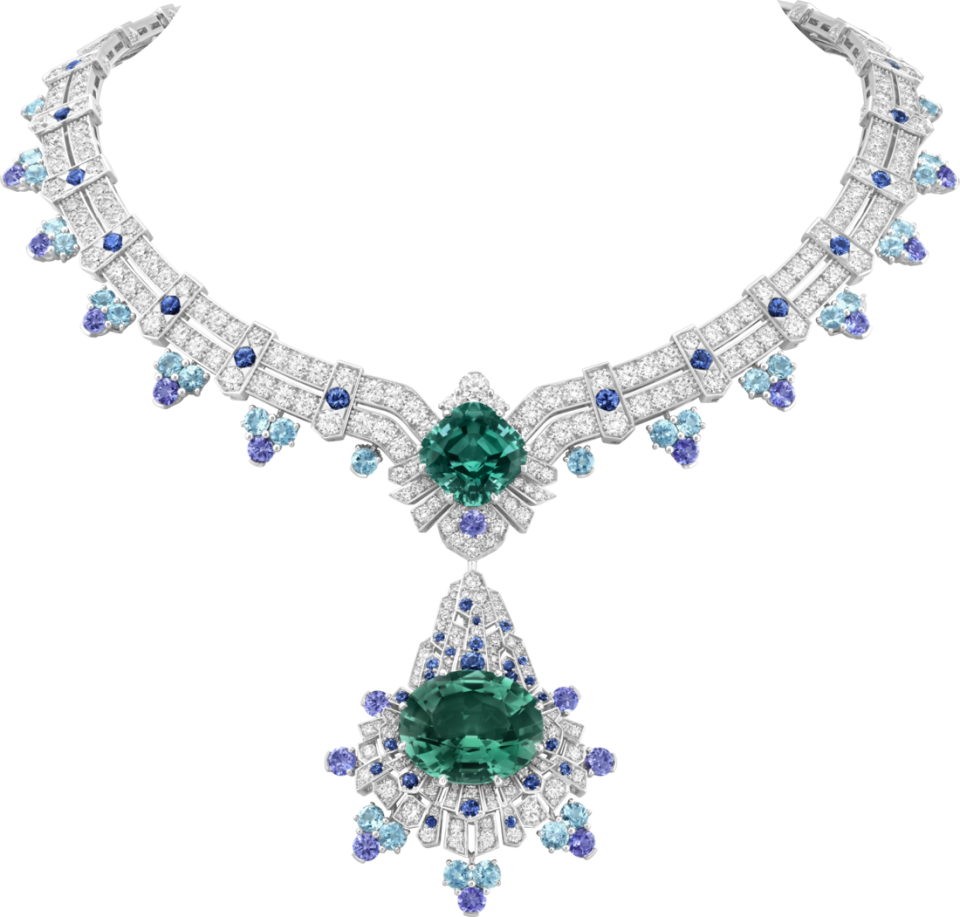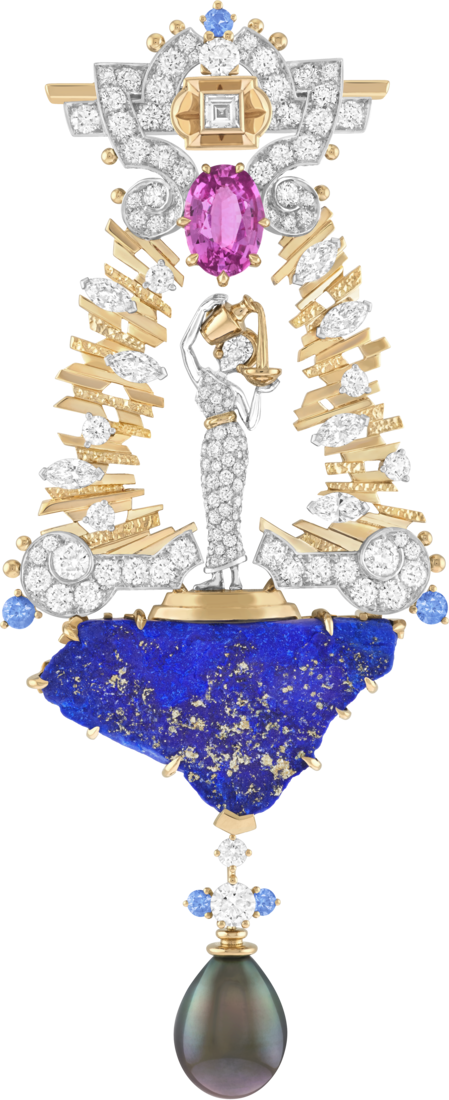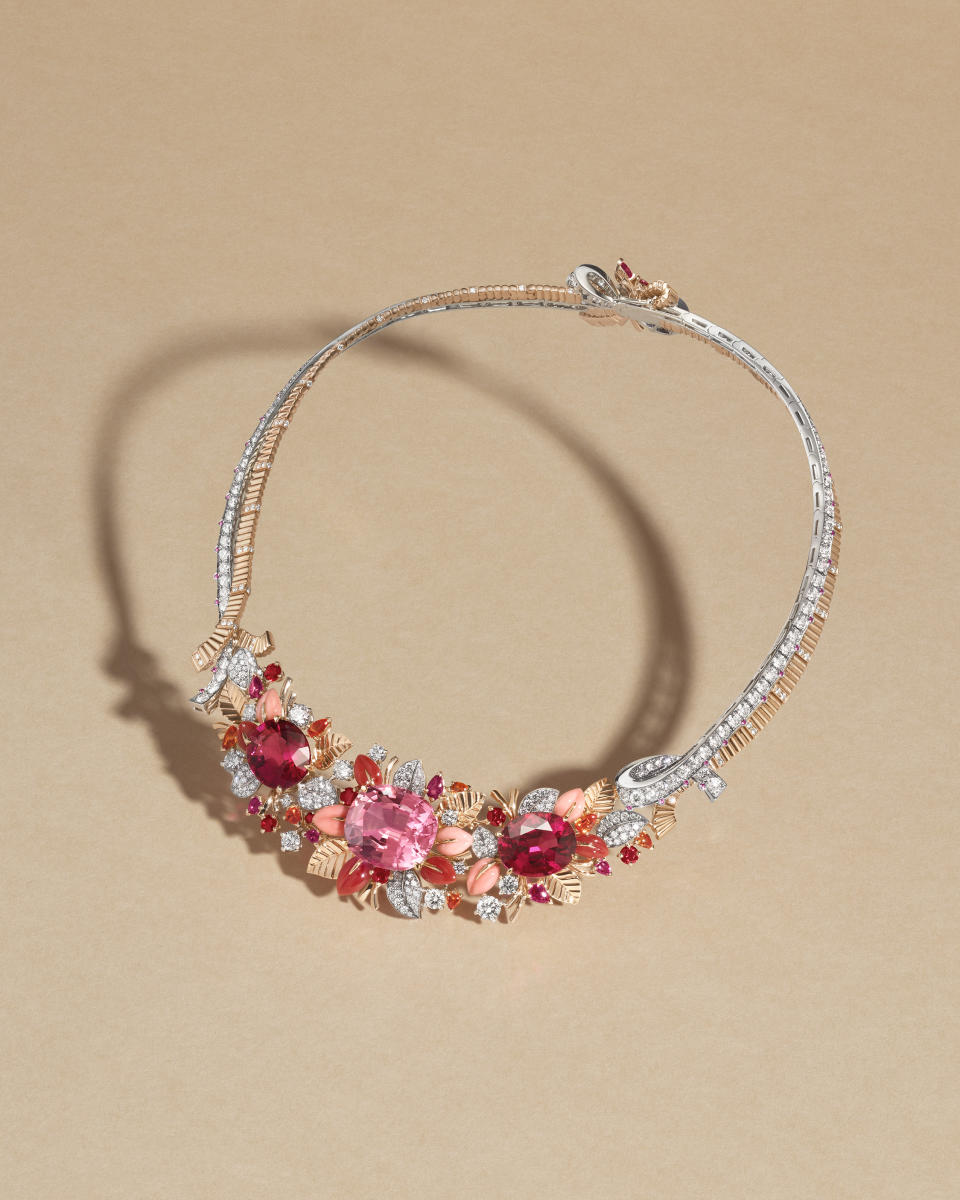Van Cleef & Arpels Unveils High Jewelry Collection in Rome

ROME — Van Cleef & Arpels jewelry sometimes is inspired by “imaginary places or fairy tales,” but for its latest high jewelry collection unveiled on Wednesday evening in Rome, it was more about “real journeys through history and art,” said president and chief executive officer Nicolas Bos.
Specifically, the Grand Tour, which gives the name to the collection and best embodies the cultural experience popular in the 18th and 19th century.
More from WWD
Titanic's Artifacts Recovered: The Jewelry, Shoes, Clothes, Fine China and More
Met Gala 2023: Standout Jewelry Moments With Doja Cat, Emily Ratajkowski and More
The Grand Tour was “a way for a lot of young people, artists and creators to educate themselves to discover art and culture traveling from London, Paris or Germany across Europe, and Italy was of course a main destination,” Bos explained.
Van Cleef & Arpels staged the presentation at Rome’s Villa Medici, the Academy of France in the Italian capital, which was at the heart of the Grand Tour.
Throughout the estate and the terrace overlooking the city, with the help of actors, the company offered postcards of some of the main cities considered a Tour Must-see: a serenade in Neapolitan to a model wearing a parure on one end, musicians under a Wedgwood-like pavilion, or the traditional Harlequin character in Venice jesting in another corner of the garden. More surprises were in store, as Pulcinellas on stilts and several other masked characters danced around the garden while horses pulled a golden chariot or raced through the esplanade. After a fashion show during dinner, the evening ended with colorful hot air balloons floating in the sky and an opera singer performing while suspended mid-air.
Villa Medici’s “cultural inspiration and celebration of beauty continues today; it’s not only a place of fantastic memories of the past and of Italian Renaissance,” Bos said.
On display was a collection of around 70 beautiful and artistic high jewelry pieces.

“The collection is multidimensional. It blends the traditions of jewelry and decorative arts — such objects were brought back as souvenirs from the Grand Tour — with the idea of once again discovering and mixing periods and cultures,” Bos said. The company chose cities that were renown stops historically, taking inspiration from antique jewelry — Roman, Etruscan, Medieval or Renaissance — “marrying it with our own heritage, style and craftsmanship.”
Four bracelets faithfully reproduced views of Venice, Rome, Florence and Naples, Italy, their bridges, domes and skylines, similar to antique micro-mosaics, but Bos underscored the intent was “to stay away from stereotyped postcard images.” Entirely flexible, they were inspired by the bandeaux bracelets typical of the 1920s. “Inspiration is very important, like with art and poetry, it is key…what we are looking for is to find the right balance between inspiration and references, without being too obvious or literal.”
Necklaces and bracelets formed landscapes and motifs, including snow-peaked mountains and brooches reproducing Alpine edelweiss. Worked three-dimensionally, sculptural clips comprised vintage cameos. Earrings surprised as Baroque girandoles.
“Jewelry is one of the oldest expressions of art, and it’s a universal expression across cultures. It was a bit forgotten, but it has come back, there is a nice exposure and you see more of it in museums and initiatives,” said Bos, who has for years organized exhibitions around the world for the brand and continues to work on several projects to “internationally develop the culture of jewelry,” he said. These include, for example, the current “Garden of Green” exhibit in New York at the American Museum of National History, and the support of the School of Jewelry Arts’ exhibition “A New Art, Metamorphoses of Jewelry, 1880-1914” in Paris.
Asked about the arrival on the scene of new brands introducing high jewelry, Bos believes they can help “introduce the category and start the journey.” He sees many returning and loyal Van Cleef & Arpels clients across generations, building “a real strong connection,” although he realizes that “some collectors also buy different iconic pieces from other brands, similarly to art collectors.”
The Piazza Divina necklace was a marvel, reflecting the Baroque architecture of Rome’s Saint Peter’s Square designed by Bernini — a first trapezoidal area that gives way to a second one with an elliptical shape. Rings of white gold set with diamonds, studded with emeralds and sapphires, formed the choker, punctuated by 14 pendeloques in rose gold and diamonds, alternating with motifs that each combined a pear-shaped diamond and an emerald. At the center of the necklace, a medallion showcased an oval-cut Ethiopian emerald weighing 13.09 carats, surrounded by round diamonds.
Inspired by the London stop, and Canova’s statue at Chatsworth House, the Dea Eterna brooch revealed the silhouette of the goddess Hebe, perched on a rock of lapis lazuli pouring ambrosia from a niche made of superposed strips of polished or textured gold and marquise-cut diamonds, which suggest the asperities of rock. The three-dimensional elements included pink sapphire, lapis lazuli and a cultured pearl — a sort of tableau, evoking the artificial waterfall installed in the gardens of the stately home, crowned by an elegant pavilion in the form of a temple.

Naples inspired the Ninfe necklace, depicting a floral crown, similar to those that can be seen in the mosaics of the ruined Nymphaeum in Herculaneum, a monument dedicated to the nymphs. Made of links of gadrooned rose gold or diamonds and pink sapphires, they were joined at the neck to form a three-dimensional knot. A composition of leaves in gadrooned rose gold, white gold and diamonds, or red and pink “angel-skin” coral surrounded three vividly colored gems. A pink cushion-cut rubellite weighing 24.02 carats was accentuated by two oval-cut rubellites weighing 12.44 and 11.52 carats of particularly even color. Rubies, pink sapphires and spessartite garnets were strewn across the necklace, carefully articulated for comfort, while the tips of the leaves on the central motif were softened and slightly curved.

Best of WWD

